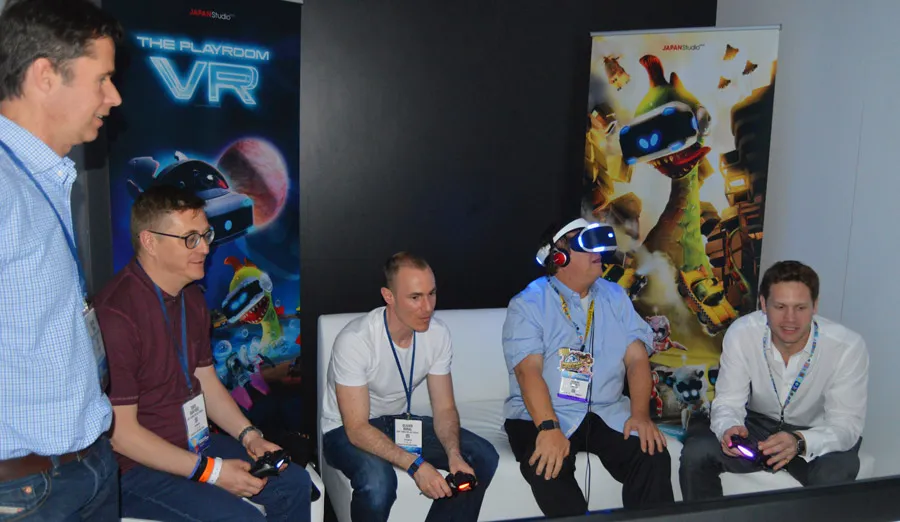A recurring theme among those skeptical of VR is that it is either anti-social, costly, or both. After all, even if you scrounge up enough money to buy a PC powerful enough to drive the Rift or Vive, it’s going to be tough to get a friend to buy similar equipment so the two of you can experience a game like Eve: Valkyrie together.
However, innovative developers are working on some experiences that shatter the anti-social conception of VR. Here’s a look at five multiplayer game experiences making it easier to introduce people to VR. Most only require one headset.
Keep Talking And Nobody Explodes
This game just launched for the Gear VR and requires only one person equipped with a Gear VR to play a cooperative game. The player in VR tries defusing a bomb while one or more people hastily check a manual containing instructions to defuse it.
The manual can be printed out, loaded as a webpage or saved as a PDF. “Every bomb is different” and the manual is jam-packed with information, making it a true test of how well you can communicate. The gameplay makes Keep Talking And Nobody Explodes the perfect party game.
The game is coming to DK2 this fall and the PC version will support regular monitors as well. The Gear VR version sells for $9.99 in the Oculus store.
Polo
This entry by Marc Hansen won $10,000 in the Oculus Mobile VR Jam. One player downloads a version of the game to an Android phone to become Marco the Cat. Another player downloads the Polo the Mouse version of the app to a Gear VR and the two players connect over wi-fi.
As Polo, the player in VR uses a gamepad to scurry across the floor and eat cheese hidden around a level. As Marco, the player uses the Android touch screen to look at a top-down view of the map and direct the cat around the level hunting Polo.
From the perspective of Polo the Mouse, Marco the Cat is a positively gigantic beast that pops out of corners to eat you. The way this game jam entry uses a touch screen phone in a traditional way to drive genuine fear in VR could lead to a lot of copycats.
Monster Escape
This Morpheus title from Sony’s Japan Studio is a 4 v 1 experience running from a single PlayStation 4 console. One player gets a first-person view inside a Morpheus headset while the other four players watch the game on a TV and use DualShock 4 controllers to try to throw things at the player inside VR.
The player inside Morpheus is sitting down and tries to dodge the objects by physically moving their head. This gameplay sounds a lot like Mario Party adapted for VR.
SteamCrew VR
This entry in the Oculus Mobile VR Jam won the $200,000 grand prize. Two players wearing Gear VR headsets cooperate to operate a submarine while attempting to fend off sea monsters. Even under the tight technical constraints of the 60 frames-per-second Gear VR, the game shows how cooperative gameplay is possible.
Altspace
Altspace is one of several social VR platforms. However, it is notable for both pushing the limits of current VR technology and for extending outside VR headsets. You don’t need a VR headset to log onto Altspace and communicate with other avatars, but if you have one, you can bring some of your head movements into the space. As seen in the above video, Altspace has been testing eye-tracking technology to bring more subtle human interaction into VR.
You can warp from place to place by clicking a mouse and Altspace is constantly adding new features to try and enable avatars to do more interesting things together in VR, like watch a movie or play a game of chess. During its largest events, around 60 avatars have shared a room in Altspace together.

























